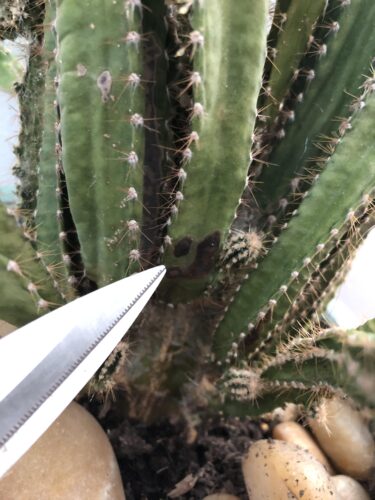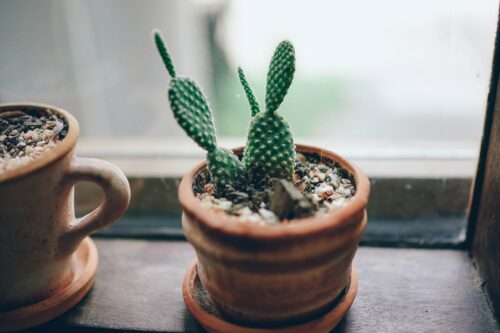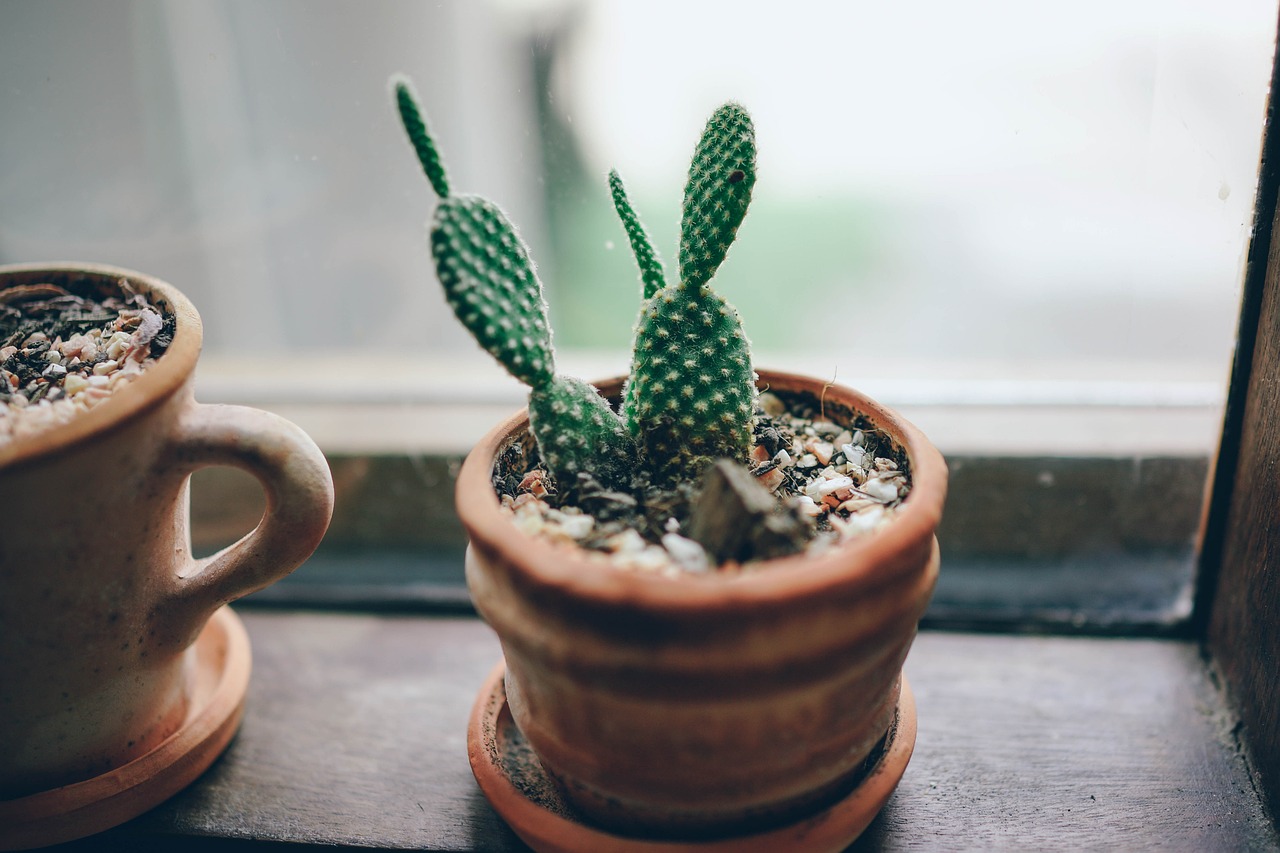Read about Black Spots on Cactus: Causes, Symptoms, and Expert Solutions in this guide and discover how to protect them.
Check out Black Spots on Cactus: Causes, Symptoms, and Expert Solutions in this informative post to improve the health of your beloved cacti.
Want to grow Kalanchoe millotii? Check THIS
Black Spots on Cactus: Causes

1. Fungal Infections
Fungal infections are one of the primary culprits behind the development of black spots on cacti. Various fungi can affect cacti, but two common ones are Alternaria and Cercospora. These fungi thrive in humid or damp conditions, and they typically enter cacti through wounds or damaged areas. Once inside, they can infect the plant tissues, resulting in the formation of black or dark-colored spots.
2. Overwatering
Overwatering is a common mistake that cactus owners make. Cacti are adapted to arid environments and have low water requirements. When you water your cactus too frequently or use excessive water, the soil can become waterlogged. This creates a conducive environment for fungal growth. The excess moisture around the roots can lead to fungal infections, which manifest as black spots on the cactus.
Confused: Is Agave a Cactus or Not? Check this POST
3. Poor Drainage
Inadequate drainage in your pot-carrying cactus can also contribute to overwatering issues. If water cannot drain from the pot, it accumulates at the bottom, saturating the soil and causing the root zone to become overly moist.
This excessive moisture creates the perfect conditions for fungal spores to multiply, leading to black spot development.
4. Sunburn
While cacti need plenty of sunlight, they can suffer from sunburn if they’re suddenly exposed to intense sunlight without acclimatization. Sunburn can cause the cactus’s epidermis to become damaged, leading to black or darkened spots on the affected areas. It’s important to introduce your cactus gradually to brighter conditions to prevent sunburn.
5. Frost Damage
Cacti are generally adapted to warm and arid environments. Exposure to cold temperatures, especially frost, can stress the plant and lead to cell damage, which might present as blackened areas on the cactus. Protect your cacti from extreme cold, and avoid exposing them to sudden temperature fluctuations.
CHECK Graptosedum ‘Daruma Shu-rei’ Care
6. Bacterial Infections
In some cases, black spots on cacti may be caused by bacterial infections. These infections can result from poor sanitation practices or from using contaminated tools, pots, or soil. Maintaining cleanliness when handling your cacti and using sterile equipment can help prevent bacterial infections.
7. Insect or Pest Damage
Cacti can fall victim to pests like scale insects, mealybugs, or aphids. These pests can feed on the sap of cactus, causing damage to the plant’s tissues. In response to the feeding, cacti may develop black spots or discoloration at the feeding sites. Regularly inspect your cacti for signs of pest infestations and treat them promptly.
Read Fairy Castle Cactus Care
Black Spots on Cactus: Symptoms

Discolored Spots:
The most obvious and common symptom of black spots on cacti is the appearance of dark, black, or brown spots on the surface of the plant. These spots may vary in size and shape, ranging from small specks to larger irregular patches.
Soft or Slimy Texture:
When fungal infections cause black spots, the affected areas may exhibit a soft or slimy texture. This is a sign of active fungal growth, and the spots may spread if not addressed promptly.
Yellowing or Browning:
In addition to the black spots, you might observe yellowing or browning of the cactus tissues surrounding the affected areas. This is a result of the damage caused by the infection. The discoloration can extend beyond the black spots.
Reduced Growth or Wilting:
As the health of the cactus deteriorates due to the black spot issue, you may notice a decrease in its growth rate or overall vitality. The cactus may appear less robust and could begin to wilt or droop.
Pustules or Lesions:
In some cases, especially with severe fungal infections, the black spots may develop pustules or raised lesions on the surface of the cactus. These can be particularly noticeable and indicate an advanced infection.
CHECK Boobie Cactus Care and Growing Guide
Spore Production:
Fungal infections often result in the production of spores, which can appear as a powdery substance on the black spots. These spores are a sign of active fungal growth and can contribute to the further spread of the infection.
Stunted or Distorted Growth:
Beyond wilting, the cactus’s growth may become stunted or distorted as a response to the damage caused by the black spots. This can result in abnormal or unusual growth patterns.
General Decline in Health:
As the infection progresses and the cactus’s condition deteriorates, you may observe an overall decline in its health. This can manifest as a lack of vigor, with the cactus appearing weak and less vibrant than usual.
Discover Dancing Bones Cactus Care HERE
Black Spots on Cactus: Expert Solutions

1. Isolation and Pruning:
Begin by isolating the affected cactus to prevent the spread of the issue to other plants. Using sterile pruning shears or a sharp knife, carefully remove the sections of the cactus with black spots. Make clean cuts to reduce the risk of further infections.
2. Adjust Watering Habits:
Excess moisture is a common cause of fungal infections in cacti. Adjust your watering routine to ensure the soil dries out completely between waterings. This reduces the humidity around the plant and discourages fungal growth.
3. Repot in Well-Draining Soil:
Transplant your cactus into a pot with well-draining soil specifically formulated for cacti and succulents. The improved drainage helps to prevent moisture buildup around the roots, reducing the risk of future infections.
4. Pest Management:
If pests such as scale insects, mealybugs, or aphids are the culprits, implement appropriate pest management measures. This may include using natural remedies like neem oil or insecticidal soap or introducing beneficial predators to control the pest population.
Have a look at the CACTUS WITH WHITE FLOWERS
5. Sunlight Regulation:
Protect your cactus from harsh, direct sunlight, which can lead to sunburn and black spots. If you need to move your cactus to a brighter location, do so gradually to acclimate the plant. Providing partial shade during the hottest part of the day can also help.
6. Fungicide Treatment:
For severe fungal infections, consider using a fungicide formulated for use on cacti and succulents. Always follow the manufacturer’s instructions carefully, including the recommended dosage and application frequency. Ensure good ventilation while using fungicides.
7. Regular Care:
Consistency is key to keeping your cactus healthy. Maintain a regular care routine, including providing the right amount of water, fertilizing as needed, and ensuring your cactus is in an environment with proper humidity and airflow.
8. Pruning and Repotting Techniques:
After pruning black spots, allow the cut sections to dry and form calluses before replanting. This minimizes the risk of fungal infection through open wounds. When repotting, ensure the new container has drainage holes and is appropriately sized for your cactus.
9. Protective Measures:
Take preventative measures to avoid the spread of fungal spores. Ensure the work area is clean, and sterilize your pruning tools after use. Also, practice good hygiene, such as washing your hands, to avoid transferring potential contaminants.


